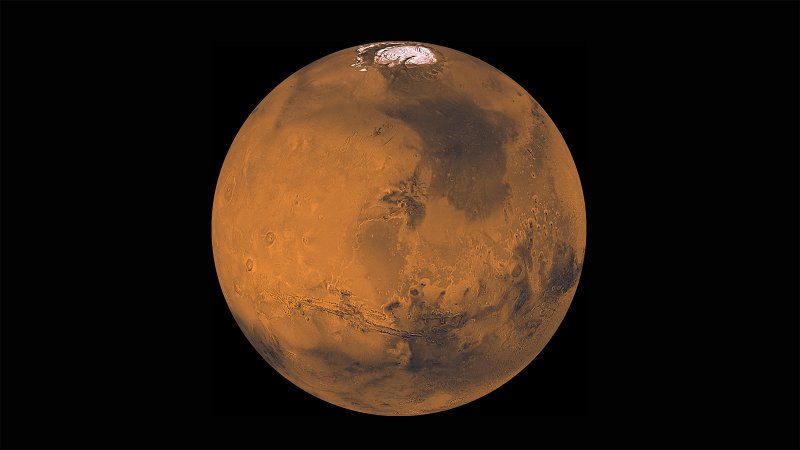Startling Discovery Reveals Oxygen On Mars Doesn’t Behave By Known Chemistry
Eddie Gonzales Jr. – MessageToEagle.com – Either there is something wrong with our current knowledge of chemistry or we simply cannot comprehend how the environment on Mars works.
Scientists have made a startling discovery and the Red Planet is now even more interesting than before.
For the first time in the history of space exploration, scientists have measured the seasonal changes in the gases that fill the air directly above the surface of Gale Crater on Mars.
As a result, they noticed something baffling: oxygen, the gas many Earth creatures use to breathe, behaves in a way that so far scientists cannot explain through any known chemical processes.
Mars – Credit: NASA – JPL
Sample Analysis at Mars (SAM) portable chemistry lab inside the belly of NASA’s Curiosity rover inhaled the air of Gale Crater and analyzed its composition. The results confirmed the makeup of the Martian atmosphere at the surface: 95% by volume of carbon dioxide (CO2), 2.6% molecular nitrogen (N2), 1.9% argon (Ar), 0.16% molecular oxygen (O2), and 0.06% carbon monoxide (CO).
Molecules in the Martian air mix and circulate with the changes in air pressure throughout the year. These changes are caused when CO2 gas freezes over the poles in the winter, thereby lowering the air pressure across the planet following redistribution of air to maintain pressure equilibrium. When CO2 evaporates in the spring and summer and mixes across Mars, it raises the air pressure.
The Oxygen Enigma On Mars
So far everything is understandable but here comes the mystery – the oxygen behavior on Mars is unlike anything researchers have observed before.
Scientists found that nitrogen and argon follow a predictable seasonal pattern, waxing and waning in concentration in Gale Crater throughout the year relative to how much CO2 is in the air. They expected oxygen to do the same. But it didn’t. Instead, the amount of the gas in the air rose throughout spring and summer by as much as 30%, and then dropped back to levels predicted by known chemistry in fall. This pattern repeated each spring, though the amount of oxygen added to the atmosphere varied, implying that something was producing it and then taking it away.
“The first time we saw that, it was just mind boggling,” said Sushil Atreya, professor of climate and space sciences at the University of Michigan in Ann Arbor.
To be certain the data was correct, researchers checked all instruments, but nothing wrong with their equipment.
See also:
Enigmatic Methane On Mars – How Long It Lasts In Planet’s Atmosphere And What Is Its True Source
We Have Found Evidence Of Life On Mars – Former NASA Scientist Says
Elongated Cloud Formation Hovering Near 20km High Volcano On Mars – Spotted
Scientists considered the possibility that CO2 or water (H2O) molecules could have released oxygen when they broke apart in the atmosphere, leading to the short-lived rise. But it would take five times more water above Mars to produce the extra oxygen, and CO2 breaks up too slowly to generate it over such a short time.
What about the oxygen decrease? Could solar radiation have broken up oxygen molecules into two atoms that blew away into space? No, scientists concluded, since it would take at least 10 years for the oxygen to disappear through this process.
“We’re struggling to explain this,” said Melissa Trainer, a planetary scientist at NASA’s Goddard Space Flight Center in Greenbelt, Maryland who led this research.
“The fact that the oxygen behavior isn’t perfectly repeatable every season makes us think that it’s not an issue that has to do with atmospheric dynamics. It has to be some chemical source and sink that we can’t yet account for.”
So not only is the Mars methane mystery unsolved, but scientists also have the oxygen enigma to ponder.
Written by Eddie Gonzales Jr. – MessageToEagle.com Staff











